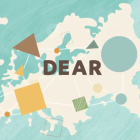Campaigning for the Climate Guide
Are you educating or mobilising people around one of our planet´s challenges? Are you working with volunteers and activists to fight for climate justice and for a better future for climate-displaced people?
The DEAR-funded project #ClimateOfChange developed a campaign strategy that remains extremely relevant for advocates for climate justice.
Practitioners of Global Citizenship Education (GCE) and the new series of DEAR projects can benefit from the very solid, elaborate and colourful campaign guide, structured around events, communication content and advocacy.
“Changing people’s minds is hard. Achieving real change in society is hard”, the guide acknowledges. Thus, the DEAR Programme builds on past experiences of successes - as well as learns from failures. New DEAR projects are not starting from scratch. We can all build on the foundations and experiences collected and built by many generations of DEAR campaigns.
In terms of campaign events, TEDx talks in strategically selected European capitals, and web series on the young participants´ study tours to countries with the most visible impact of climate change stand out. Past campaign successes have shown such activities to have impact.
Proposed communication content includes influencer marketing and social-experiment videos to study people’s behaviours. Among the very thorough and detailed overview of campaign options, we also find advice on campaigns’ tone:
Advocacy - and lobbying - refers to campaign efforts to influence politicians and other decision-makers to shape policies and funding to enhance the causes they are fighting for. Many DEAR-funded projects have enabled youth delegations to spread their voice at flagship international climate conferences, such as COP summits.
The #ClimateOfChange campaign, for an example of good practice, also brought journalists to Senegal and Guatemala to witness and listen to the people who are most impacted by climate change. These are the real stories that leave a mark and can spread through traditional and social media. The guide also describes media stunts, petitions, and strategically-placed advocacy actions within the priorities of the rotating EU presidency countries.
The 100+ pages of guidance and ideas also zoom in on the most receptive audiences to target, effective messages, concrete advocacy “asks” and data for evidence-based communication. The guide covers on- and off-line campaign tools and tactics, and also includes broader storytelling tips and a timeline.
The fourth and last section is dedicated to additional resources, including tools and material for campaigners, “like-minded” organisations to follow on social media, and campaign branding guidelines. It is a self-described “springboard for creative action!”
For example, on the occasion of an election round, some of top tips include:
- Call on young people to join forces with existing worldwide initiatives
- Be concrete on what exactly you want elected officials to do when you push them for the type of policies you envision. That means knowing the role and legislative procedures at local, national and European level government.
- Don’t forget about the importance of following the implementation of policies. Getting the right policies is just half the battle.
The #ClimateOfChange campaign guide can inspire, inform and complement your strategies to push for climate justice - or for other global challenges. #ClimateOfChange energised youth to speak up about the root causes of climate change, and elevated the voices of forced migrants to build a fair and sustainable human future.


(1)
Log in with your EU Login account to post or comment on the platform.
This is a laudable idea.